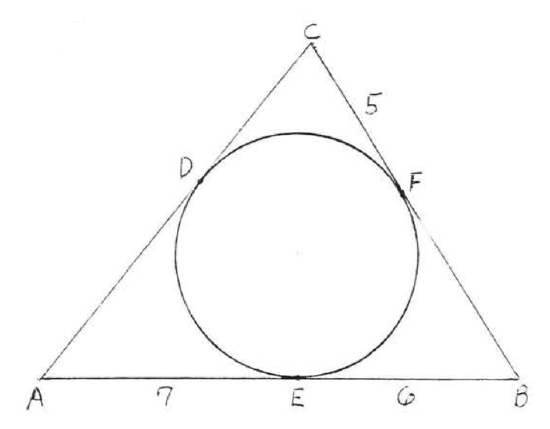7.3: Tangents to the Circle
( \newcommand{\kernel}{\mathrm{null}\,}\)
A tangent to a circle is a line which intersects the circle in exactly one point. In Figure 1 line ↔AB is a tangent, intersecting circle O just at point P.
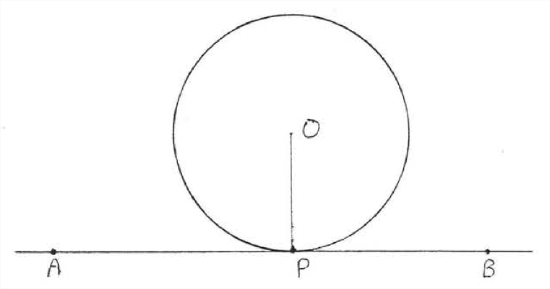
A tangent has the following important property:
A tangent is perpendicular to the radius drawn to the point of intersection.
- Proof
-
OP is the shortest line segment that can be drawn from 0 to line ↔AB. This is because if Q were another point on ↔AB then OQ would be longer than radius OR=OP (Figure 7.3.2). Therefore OP⊥↔AB since the shortest line segment that can be drawn from a point to a straight line is the perpendicular (Theorem 7.3.2, section 4.6). This completes the proof.
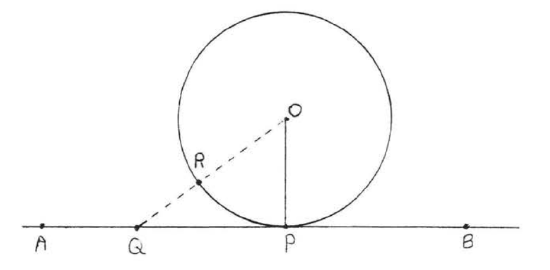
Figure 7.3.2: OP is the shortest line segment that can be drawn from O to line ↔AB.
In Figure 7.3.1 tangent ↔AB is perpendicular to radius OP at the point of intersection P.
Find x:
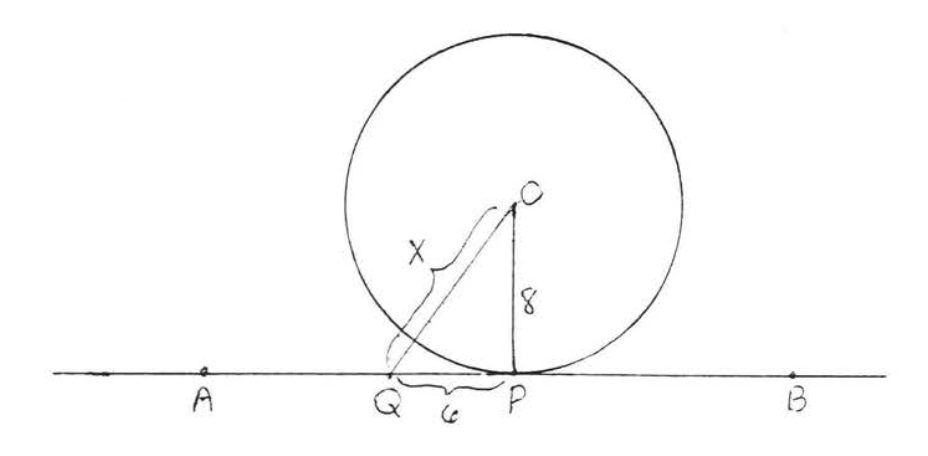
Solution
According to Theorem 7.3.1, ∠QPO is a right angle. We may therefore apply the Pythagorean theorem to right triangle QPO:
62+82=x236+64=x2100=x210=x
Answer: x=10.
The converse of Theorem 7.3.1 is also true:
A line perpendicular to a radius at a point touching the circle must be a tangent.
In Figure 7.3.3, if OP⊥↔AB then ↔AB must be a tangent; that is, P is the only point at which ↔AB can touch the circle (Figure 7.3.4).
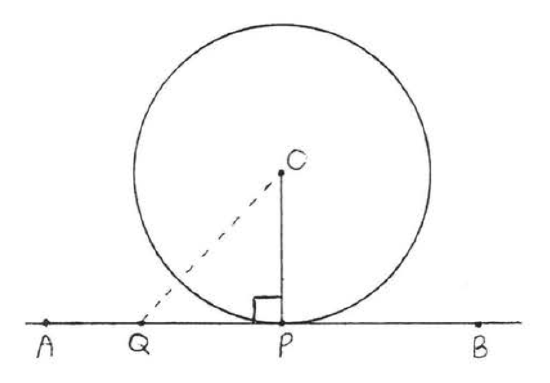
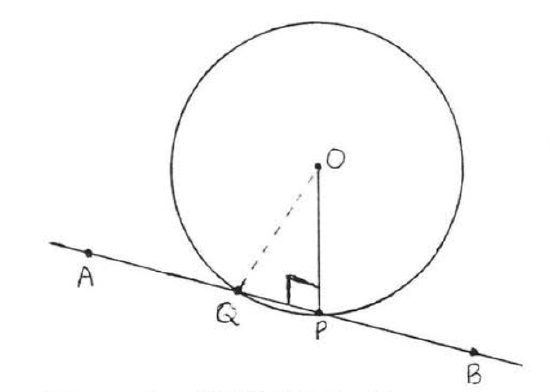
- Proof
-
Suppose Q were some other point on ↔AB. Then OQ is the hypotenuse of right triangle OPQ (see Figure 7.3.3). According to Theorem 7.3.1, section 4.6, the hypotenuse of a right triangle is always larger than a leg. Therefore hypotenuse OQ is larger than leg OP. Since OQ is larger than the radius OP, Q cannot be on the circle. We have shown that no other point on AB besides P can be on the circle. Therefore ↔AB is a tangent. This completes the proof.
Find x, ∠O, and ∠P:
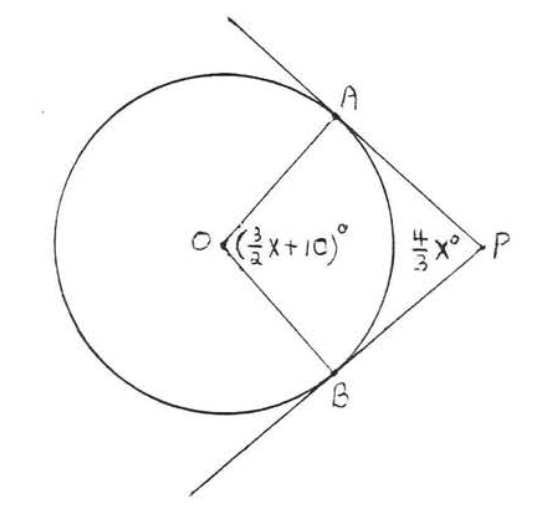
Solution
↔AP and ↔BP are tangent to circle O, so by Theorem 7.3.1, ∠OAP=∠OBP=90∘. The sum of the angles of quadrilateral AOBP is 360∘ (see Example 1.5.5, section 1.5), hence
90+(32x+10)+90+43x=36032x+43x+190=36032x+43x=170(6)(32x)+(6)(43x)=(6)(170)9x+8x=102017x=1020x=60
Substituting 60 for x, we find
∠O=(32x+10)∘=(32(60)+10)∘=(90+10)∘=100∘
and
∠P=43x∘=43(60)∘=80∘.
Check:
∠A+∠O+∠B+∠P=90∘+100∘+90∘+80∘=360∘.
Answer
x=60,∠O=100∘,∠P=80∘.
If we measure line segments AP and BP in Example 7.3.2 we will find that they are approximately equal in length. In fact we can prove that they must be exactly equal:
Tangents drawn to a circle from an outside point are equal.
In Figure 7.3.5 if ↔AP and ↔BP are tangents then AP=BP.
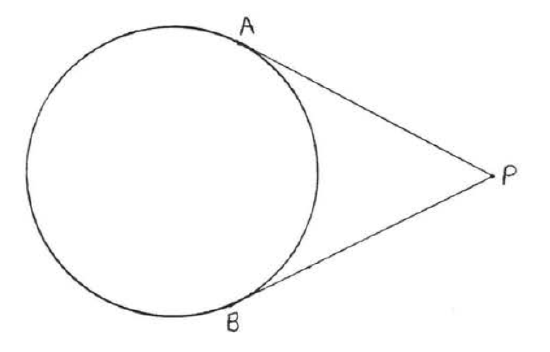
- Proof
-
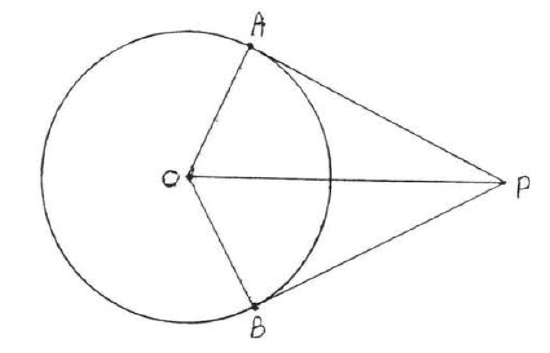
Figure 7.3.6: Draw OA,OB and OP. Draw OA,OB, and OP (Figure 7.3.6). OA=OB (all radii are equal), OP=OP (identity) and ∠A=∠B=90∘ (Theorem (\PageIndex{1}\)), hence △AOP≅△BOP by Hyp-Leg = Hyp-Leg. Therefore AP=BP beause they are corresponding sides of congruent triangles.
Find x and y:
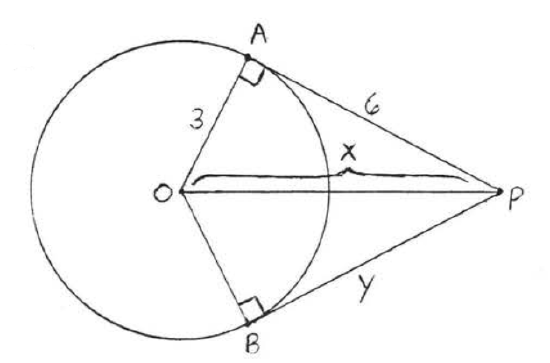
Solution
By the Pythagorean theorem, x2=32+62=9+36=45 and x=√45=√9√5=3√5. By Theorem 7.3.3, y=BP=AP=6.
Answer: x=3√5,y=6.
Find x:
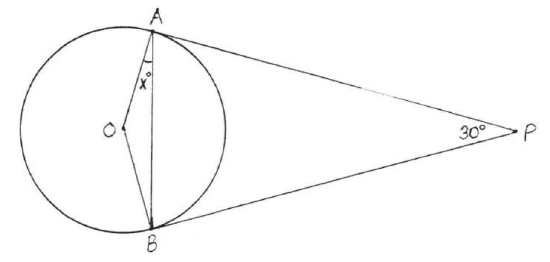
Solution
By Theorem 7.3.3, AP=BP. So △ABP is isosceles with ∠PAB=∠PBA=75∘. Therefore x∘=90∘−75∘=15∘.
Answer: x=15.
If each side of a polygon is tangent to a circle, the circle is said to be inscribed in the polygon and the polygon is said to be circumscribed about the circle. In Figure 7.3.7 circle 0 is inscribed in quadrilateral ABCD and ABCD is circumscribed about circle O.
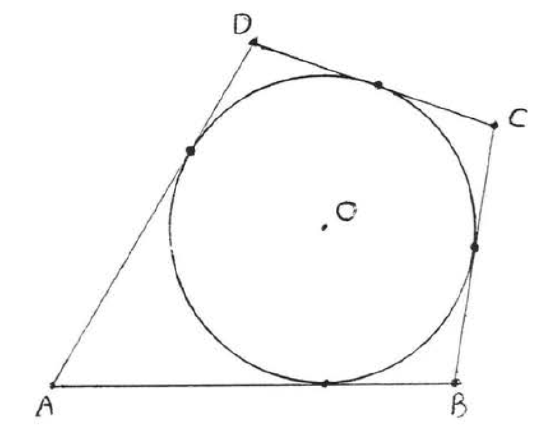
Find the perimeter of ABCD:
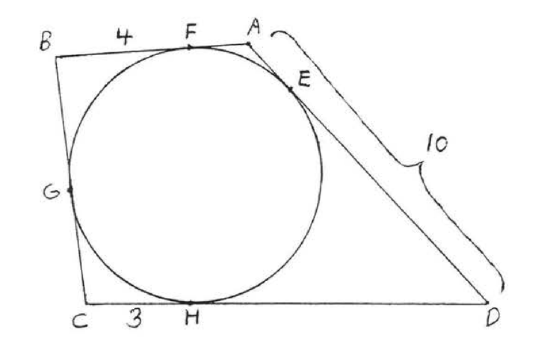
Solution
By Theorem 7.3.3, CG=CH=3 and BG=BF=4. Also DH=DE and AF=AE so DH+AF=DE+AE=10.
Therefore the perimeter of ABCD=3+3+4+4+10+10=34.
Answer: P=34.
Problems
1 - 4. Find x:
1.
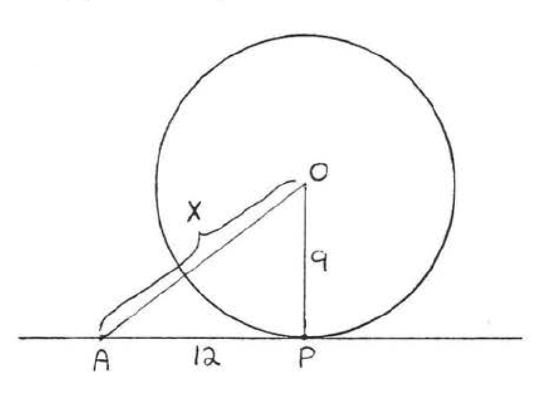
2.
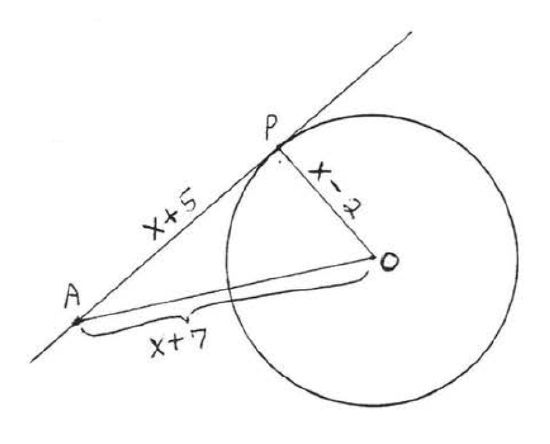
3.
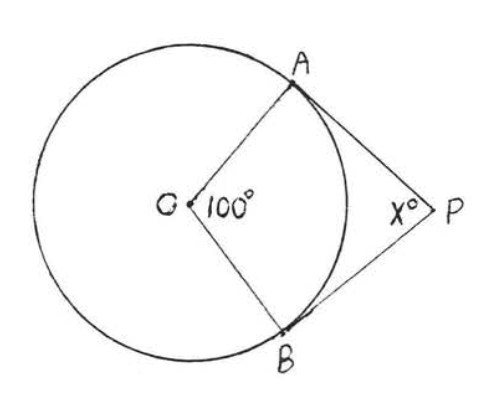
4.
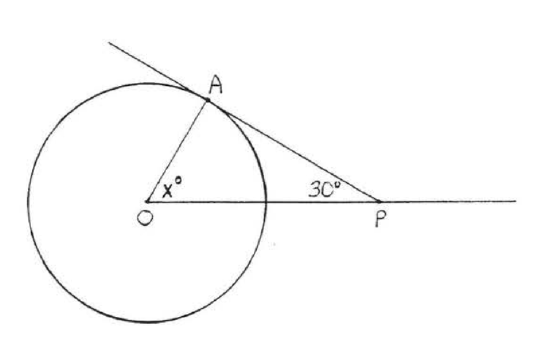
5 - 6. Find x, ∠O and ∠P:
5.
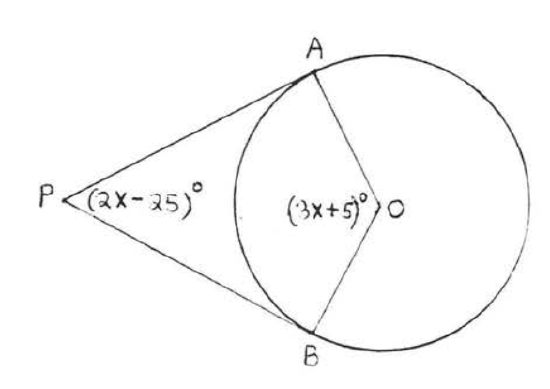
6.
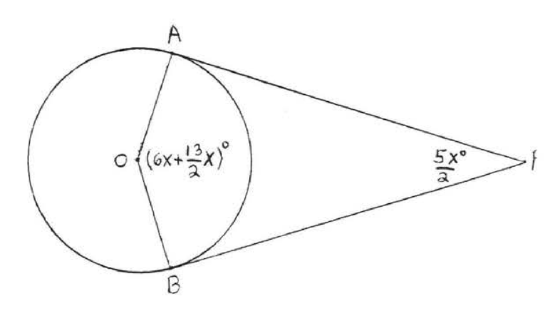
7 - 8. Find x and y:
7.
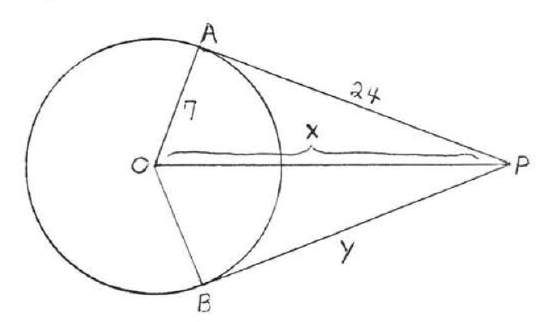
8.
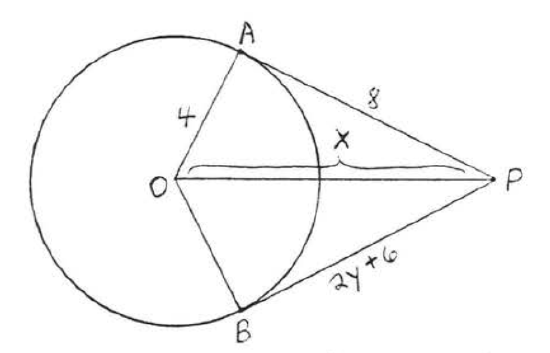
9 - 12. Find x:
9.
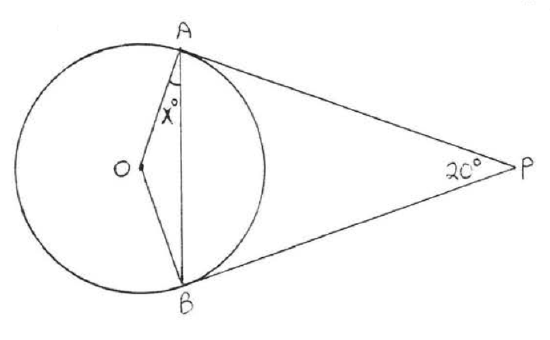
10.
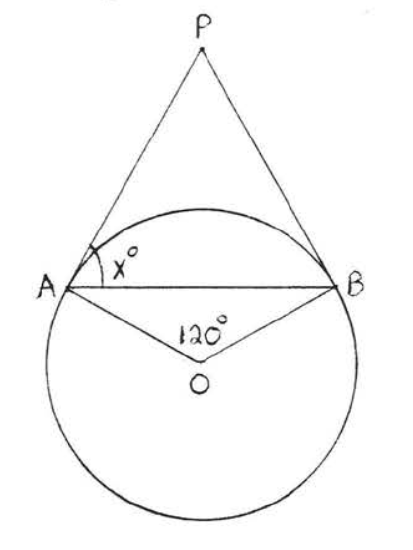
11.
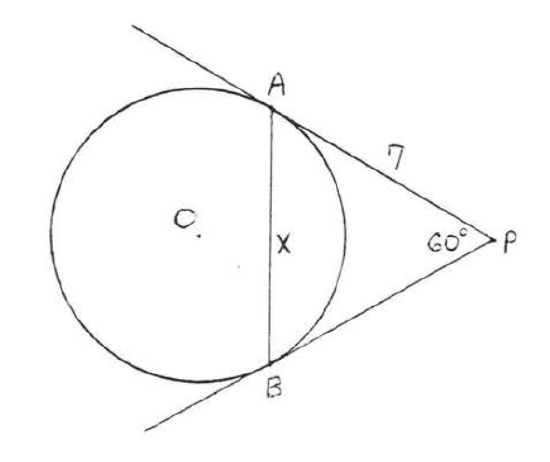
12.
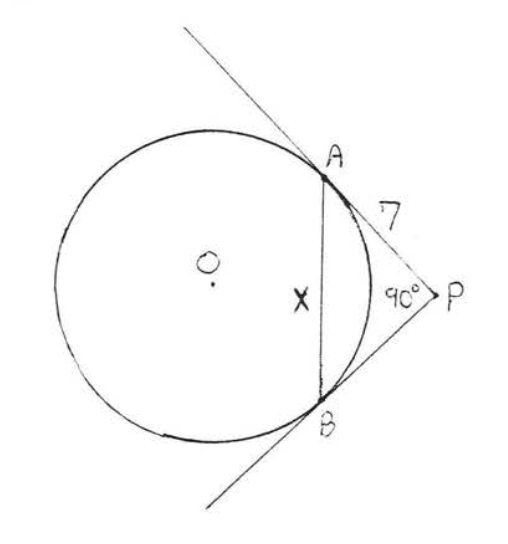
13 - 16. Find the perimeter of the polygon:
13.

14.
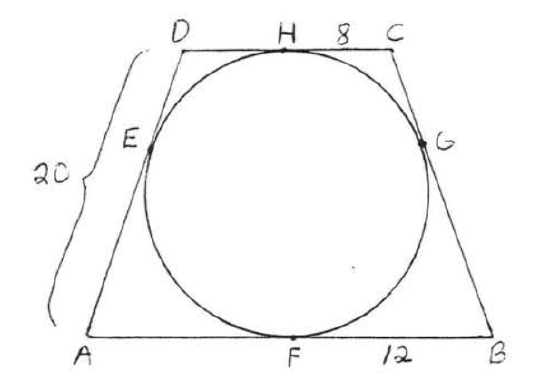
15.
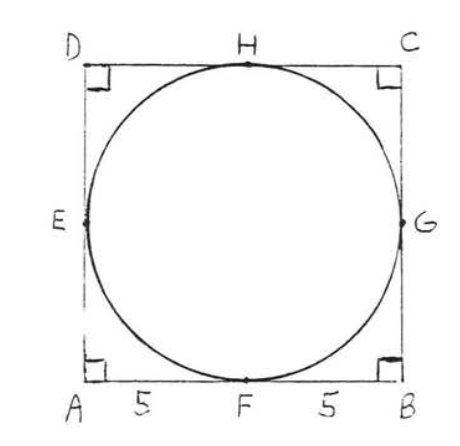
16.
